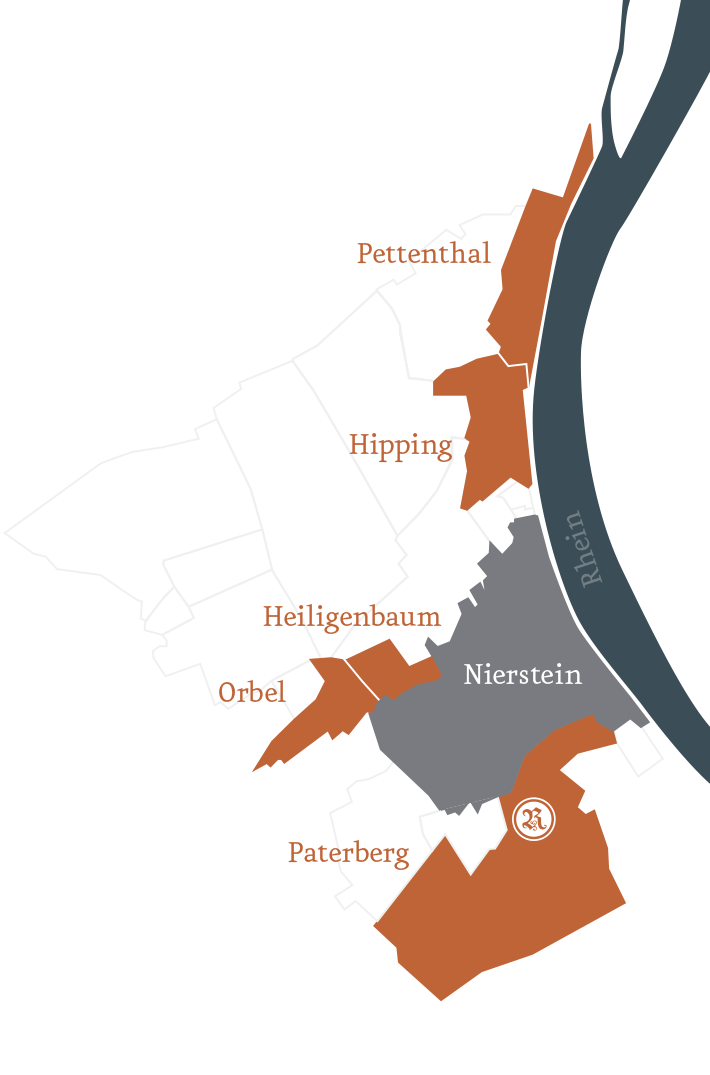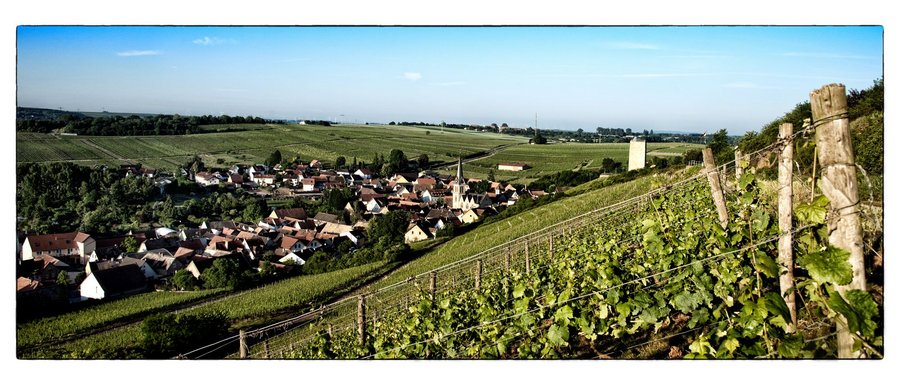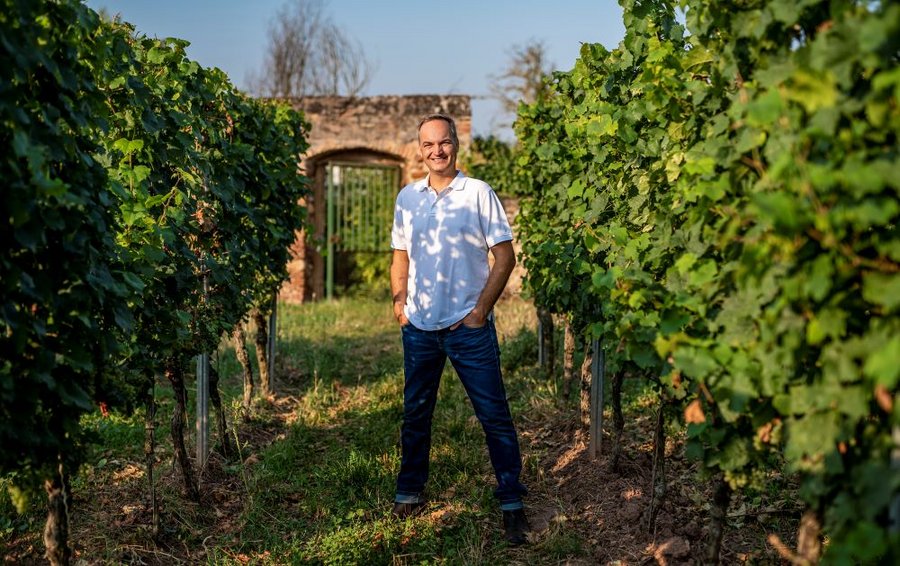Heiligenbaum
The vineyard site HEILIGENBAUM is the smallest vineyard in the Rote Hang (red hillside). The southern exposure of this vineyard leads to high daily temperatures and very good insolation. The vineyard is surrounded by an old rubble wall. This wall is protecting from wind and giving a unique micro climate.
The »Rote Hang« (red hillside next to Nierstein)
The red soil occurred over 280 million years ago. At this time there didn't even exist big dinosaurs and 278 million years later the first human beings came into this world.
The reason for the red colour are the iron compounds, that were composed under subtropical climate conditions.Due to the pressure of the superposition for million of years the clay mud became clay stone and the lose sand became solide sandstone. The nature of this red soil is similar to slate.
The yellow limestone
This soil evolved from limestones, that were leftovers from a calcareous reef. This reef covered the whole region Rheinhessen in a tropical sea 23 million years ago. In every vineyard of the Paterberg can be found massive limestone. For many years the roots of the grapevine grow through these stony soils and absorb the minerals out of these stones.



